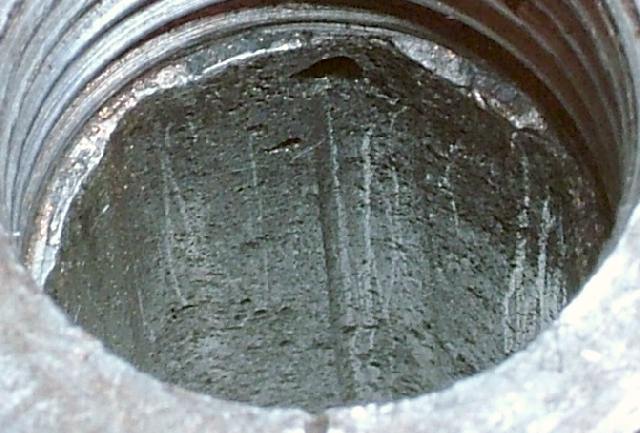Herman Karl
32 Cal
- Joined
- Nov 12, 2018
- Messages
- 25
- Reaction score
- 9


Robin,
Didn't see your post.
V busy, but must say re. your barrel;
One swallow doesn't make a summer. Most Were Not made that way. Period.
Also, No, your old pal did not know more about Damascus than the people who made it. And this for two reasons off the top of my head;
1, Not all Damascus is the same. He obviously lumped all damascus together by using this blanket statement.
(Read even Greener to get a grasp of this)
2, The men who made this 'damascus ' could weld it successfully. Your old mate could not.
Looking at the breech or anywhere of a twist /damscus barrel is in most cases futile, as nearly everyone knows how they were made.
I too have had a good few All Damascus rifle barrels. No tubes, No liners and No trouble. (Alex Henry double, was maybe the best)
I have roof to fix and snow forecast for tomorrow. Best be on.
Best wishes,
R.
According to the Book Of Trades published in the 1700,s gun barrels were formed by wrapping a mixture of iron around a mandrel in one foot lengths thicker at the breech which were then heated and place on a mandrel and joined at the joints . This was continued until the desired barrel length was obtained , to require the twist the barrel then was heated to a red hot for around three inches at a time and place in a vice and the other end is introduced into a square piece of iron and turned with a handle like a auger. This resulted that the heated part of the portion of the barrel obtained a spiral direction known has twisted , this was continued the full length of the barrel . the barrel was then bored to the required bore and the outside of the barrel was finish by grinding on a hand turned granite round wheel .
Felltwad

Very pleased you like it, Newtire!
Here is another set of barrels, (Pritchard, (Southampton if I remember right) Have used it a lot for game birds and clays;
View attachment 883 View attachment 884 Must have missed this the first time through. Would be almost afraid to take something like that out into the field and shoot it but would be a real shame also to let it just sit around not to ever be shot.
Felix,
I must thank you for taking the time to write such thoroughly detailed, and logical logical replies in this thread.
Very good work if I may say so.
Richard.
Feltwad,
Did you look at the damascus barrel site http://www.damascus-barrels.com/index.html? It clearly explains the process. I highly recommend that you buy the DVD, which documents making damascus barrels in the early 20thcentury – the process is essentially identical to that of the 18th century. I’ve attached Greener’s description of forging a dasmascus barrel. However, a picture is worth a thousand words and the DVD is very instructive – it will inform this discussion. Somewhere on my google book list I have the Board of Trade treatise and other 18thcentury treatises on gun making. What you cite is the process of twisting the ribands that compose the billet that is formed around the mandrel. The mandrel does not extend the entire length of the barrel – it could never be removed. It is a short piece of iron around which the iron is twisted in the case of damascus as it is forge welded; it keeps the section of barrel being welded from collapsing. Forge welding requires a high heat (red heat is much too low). The heat is almost white hot and close to melting temperature (I’ve melted a piece of iron or two by by not paying attention at a critical point of heat!). When taken from the fire the welding temperature can only be maintained for a minute or so -- it takes many firings to make a barrel. I’ve attached my essay on forging an 18th century barrel. It explains the forging process to make a barrel from a single piece of iron, but the forge welding process is the same for welding the spirals of a dasmascus or twist barrel. There is also a technique called “jumping” that I won’t take the time to explain. Again, visit the dasmascus barrel site and buy the DVD and all will become clear.
By the way, there was a big hubbub when the barrel making process was being “automated” and jobs eliminated. Nothing is new under the sun.





Enter your email address to join: